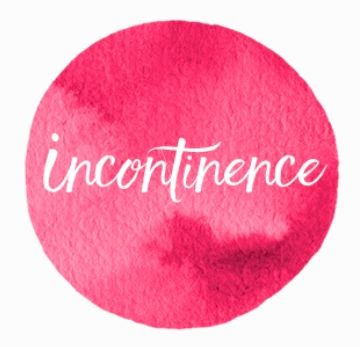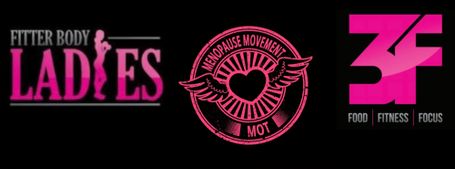
Incontinence
It can mean worrying about leaks when you cough, sneeze, laugh, exercise, or - for a quarter of women with incontinence – even when you have sex. Wet Wet Wet sang about a “Sweet Little Mystery”. But urinary incontinence (UI) is neither sweet nor mysterious, rather a distressing experience affecting as many as 30 to 50 per cent of women at the onset of menopause.
WHY NOW?
Oestrogen helps to keep the bladder and urethra (the tube that passes urine from the bladder out of the body), healthy and functioning properly. Nearing menopause, your oestrogen levels begin to drop causing pelvic muscle weakness and thinning of the urethra. UI symptoms increase as oestrogen levels continue to fall.
Caused by weak pelvic floor muscles, stress incontinence – leaking urine when you laugh, cough or sneeze - is more common in perimenopause. Other types of incontinence include: urge, when an overactive bladder means urine leaks as you feel a sudden intense need for the loo and overflow incontinence, when you can’t fully empty your bladder so it fills up again and overflows. Some women experience both stress and urge incontinence.
And the good news is…. In 85% of cases, weakness can be improved by appropriate pelvic floor exercises. You’ve nothing to lose by trying out our simple self-help solutions and plenty to gain!
BE PROACTIVE
The best ways to help control menopause incontinence Making changes to your diet, doing the correct pelvic floor exercises daily, and maintaining a good level of fitness, could help you to improve bladder issues. Otherwise, medical options are available.
What to eat to help with incontinence
Maintain a healthy balance The digestive and urinary systems are linked. Acid levels can have an impact on your bladder, making incontinence worse.
To maintain a healthy balance, eat more alkaline-forming foods:
Vegetables – cauliflower, broccoli, spinach, celery, kale, onions, peas.
Fruits – apples, bananas, grapes, melon, orange, pears, watermelon.
Protein – almonds, tofu
Spices – cinnamon, ginger, mustard
Bump up the fibre Constipation can weaken the pelvic floor as you strain to empty your bowels – and a full bowel can also push down onto your bladder.
Deal with constipation by eating more fibre-rich foods; berries, apples, plums, broccoli, whole grains, dried fruit and legumes to help you to digest food more efficiently and prevent constipation.
Get handy with herbs Add bladder-friendly, non-irritating herbs such mint, parsley, thyme and oregano to flavour foods and help soothe the bladder.
Stay hydrated Though it might sound contradictory, drinking water can help incontinence, if you get the balance right. Too much can make bladder issues worse and too little can cause dehydration, impacting on kidney function and making urine more concentrated, and likely to irritate the bladder. Women should try to drink 1.5 -2 litres (6-10 average mug sizes) of liquid per day. According to advice from the Bladder & Bowel Community website this can include decaffeinated teas and coffee, all types of diluted fruit juices, non-acidic fresh drinks, red bush tea and herbal teas such as, mint tea and dandelion leaf, that are gentle diuretics which might help to support kidney filtration.
What to avoid to help with incontinence
Reduce caffeine Cut down on caffeine in coffee, black tea and carbonated drinks. Reduce your sugar intake and be aware that artificial sweeteners in acidic carbonated drinks may irritate the bladder. Including green tea and hot chocolate.
Step away from the fruit juice Cranberry juice might be great for cystitis but not for urge incontinence as it can irritate the bladder. Tomatoes, citrus fruits, grapefruit and acidic fruit juices can also make problems worse for some people.
Limit alcohol Alcohol is another no, no. Its diuretic action, contributes to urge incontinence, leads to dehydration and makes your kidneys work hard to remove unwanted waste from your system.
Avoid hot, fiery, overly spiced foods Digestive irritants such as curries, hot peppers and other spicy foods can inflame your bladder - potentially making stress incontinence worse. They’re not going to help your hot flushes either! Cut out the heat and opt for mild spices or sauces that are coconut based; add yoghurt to cool those spices down.
And cigarettes too? Yes. Nicotine can irritate the bladder adding to symptoms. As anyone who’s had a bad cough will know coughs and stress incontinence don’t make a good match. As a smoker, you may develop a cough that may add to the stress on your bladder.
Lifestyle & wellbeing to help with incontinence
Maintain a healthy weight Being overweight puts added strain on the pelvic floor muscles – bad news for stress incontinence.
Non-prescription bladder support The initial treatment option for urge incontinence is bladder training, where you’ll learn techniques from a continence adviser to increase the period between feeling the need to wee and doing so. Your GP can make the appropriate referral.
There are products available claiming to help deal with stress incontinence:
IncoStress® A non-allergenic medical grade silicone device worn internally for up to 8 hours a day, designed by women. Available online and from Boots.
Poise Impressa, removable bladder supports that come in different sizes to help stop bladder leaks before they happen. Inserted into the vagina like a tampon, lifting and supporting the urethra to help prevent urine from leaking. A U.S product available online. We haven’t tried it but let us know if you do. Strengthening your pelvic floor Kegel Exercises strengthen your pelvic floor. To identify the target muscles, stop the flow of urine midstream and feel the muscle action kick in. (Don’t stop urination mid-stream too often, as this weakens muscles over time).
Once identified, find time to relax and contract these muscles on an empty bladder. Try out the following:
Lie on your back or sit on a chair, relaxing and contracting your pelvic muscles. Here's how:
Tense your pelvic floor muscles around your anus, you're looking for that clenching feeling of not wanting to break wind, moving forward clench vaginal muscles as if trying to keep a wee in. Squeeze both together for a count of 5.
Relax for 5 and start again, doing a set of 10
Try to do this three to four times a day.
The better you get, the faster exercise you can squeeze, ie. holding and releasing at 2 seconds.
Kegel8 produce a range of medically approved electronic pelvic floor toners. 'Designed by women who understand, the Kegel8 locates and exercises weak pelvic floor muscles automatically, making them strong again'. With 70% success rate for stress incontinence in clinical trials they could help deal with an issue that's no laughing matter. Vaginal weights and cones can also help.
Download the NHS Squeezy app. Designed by women's health physiotherapists who specialise in this area. It's a fantastic resource to remind women how. and when, to do their pelvic floor exercises, so no more excuses! Or, Swedish, pelvic floor training programme, Tät, is designed to remind you when and what exercises you should be doing to strengthen your muscles. It may reduce the severity of your symptoms in about 3 months.
It’s Pants! They do what they say on the tin, stylish knickers, try Pretty Clever Pants absorb 'life's little leaks!', or ‘Giggle Knickers’, both designed with an absorbent panel that wicks away moisture taking away the need to wear a pad, you'll feel so much more comfortable.
When to see your doctor about incontinence
If symptoms don’t improve after lifestyle, exercise and diet changes, prescription medications, including botox, may help to calm muscle spasms in the bladder.
Ask your doctor if they can refer you to a specialist women’s pelvic health physiotherapist. Physios work in the NHS and in private practice. Research has shown that pelvic floor muscle training through specialist physios is cheaper and more effective than one of the main incontinence drugs. Other research compared non-surgical treatments. This found that intensive pelvic floor muscle training, plus lifestyle changes, was the most effective method for treating incontinence.
Surgery may be an option to discuss with your doctor, although the recent advice is to see a physio first. P
elvic health campaigners #PelvicRoar has a comprehensive website that provides a list of resources you may be helpful.
And there’s always HRT….
But not necessarily for urinary incontinence. Stress incontinence is a possible side effect of HRT. Studies show that whilst bladder control improves for some women it may deteriorate for other women. Essential to talk to your doctor about this.
And we can help
Your Fbl Team x
© Copyright. All rights reserved.
